Investigation of Place Attachment and Sense of Belonging from the Perspective of the Residents - Samanbahçe Social Residences as Case Study
Investigación del apego al lugar y el sentido de pertenencia desde la perspectiva de los residentes - Samanbahçe Social Residences como estudio de caso
Abstract
For each individual, the residence he lives in is his domain and expresses the limits of privacy. In other words, the house is the private space where people express themselves and even feel themselves part of it. In this context, the relationship between the human and the residential environment is gaining importance. In the study carried out, the concepts of spatial identity, satisfaction, belonging, and human-space, human-environment relationships were examined. Samanbahçe Houses, the first social housing example built in the Ottoman period in Nicosia, North Cyprus, was selected as the study area. In the study, a questionnaire survey was conducted, including questions about human-space, human-environment relationships, spatial features, and questions about the sense of belonging-place attachment. The numerical data obtained in the survey study were analyzed together with user opinions. In the research and observations made within the scope of this study, which will contribute to future studies on Samanbahçe Houses, many spatial deficiencies and renovation needs were identified in the houses built based on user needs and expectations time they were constructed. On the other hand, the results of the interviews and surveys conducted with the users revealed that the degree of belonging and satisfaction of the people living in this area regarding their home and environment is quite high. Samanbahçe Houses continue to live as a sustainable example of social, cultural, environmental, and indoor features.
Keywords
Belonging, Human-environment relationship, North Cyprus, Place attachment, Samanbahçe social houses.
ÖZET
Her birey için yaşadığı konut onun egemenlik alanıdır ve mahremiyet sınırlarını ifade etmektedir. Yani konut insanın kendini ifade ettiği, hatta kendinden bir parça haline getirdiği özel mekânıdır. Bu bağlamda insan ve konut çevresi ilişkisi de önem kazanmaktadır. Yürütülen çalışmada mekânsal kimlik, memnuniyet, aidiyet, mahremiyet kavramlarının insan-mekân, insan-çevre ilişkisiyle beraber incelenmiştir. Kuzey Kıbrıs Lefkoşa kentinde bulunan ve Osmanlı döneminde inşa edilmiş olan ilk sosyal konut örneği özelliğini taşıyan Samanbahçe Konutları çalışma alanı olarak seçilmiştir. Çalışmada insan-mekân, insan-çevre ilişkileri, mekansal özellikler, kişisel, mekânsal ve aidiyetle ilgili soruları içeren bir anket çalışması yapılmıştır. Anket çalışmasında elde edilen sayısal veriler kullanıcı görüşleri ile birlikte analiz edilmiştir. Samanbahçe Konutları ile ilgili gelecekte yapılacak araştırmalara katkı sağlayacağı düşünülen bu çalışma kapsamında yapılan araştırma ve gözlemlerde; tasarlandığı zamanın kullanıcı ihtiyaçları ve beklentileri temelinde inşa edilen konutlarda bir takım mekânsal yetersizlikler ve renovasyon ihtiyaçları belirlenmiştir. Buna karşılık kullanıcılarla yapılan söyleşi ve anket çalışmasının sonuçları da bu alanda yaşayan insanların yaşadıkları konut ve çevresi ile ilgili aidiyet ve memnuniyet derecelerinin oldukça yüksek olduğunu ortaya koymuştur. Samanbahçe Konutları sosyal, kültürel, çevre ve iç mekân özellikleri açısından sürdürülebilir bir örnek olarak yaşamaya devam etmektedir.
Anahtar Kelimeler
Aidiyet, İnsan-çevre ilişkisi, Kuzey Kıbrıs, Yer aidiyeti, Samanbahçe sosyal konutları.
Introduction
Spatial identity emerges as a result of the interaction of human identity with that of the space. Just as each individual has a unique identity, every place has its own spatial identity. The place attachment and sense of belonging are the concepts directly related to space/place identity. Place attachment is the “bonding of people to places” (Livingston et al., 2008, p. 9). Colacios et al. (2020), mentioned that everyday experiences and historical events shape identity and attachment. In time, people develop a strong sense of community through the daily interactions and connections they have formed in their neighborhoods, which affect the place attachment and sense of belonging. According to Juno et al. (2018), place attachment provides physical and psychological benefits to people and may also have potential benefits for both human well‐being and pro‐environmental behaviors. In this context, Samanbahçe houses can be considered living organisms due to the strong ties between their inhabitants, shared everyday activities, solidarity, and a shared past. Doratlı et al. in 2002, researched the Samanbahçe area. After examining the environmental and socio-cultural qualities, they proposed possible solutions for the revitalization of the area. Yıldız et al., in a similar research done in 2009, collected information about the residents of Samanbahçe area identifying their satisfaction level with their neighborhood. They have also proposed, like Doratlı et al., solutions for the regeneration of the region. In this study, the aim was to analyze human, space, and environmental relations in the example of Samanbahçe Houses. The concepts of spatial identity, satisfaction, belonging, and place attachment were discussed to explain this relation. Samanbahçe houses built many years ago, can be considered as an essential research area considering its features that comply with the geographical conditions it is in, responds to the needs of its users, and ensures satisfaction.
Even though Samanbahçe Houses have undergone restoration and recent renovations, it is an example that has managed to survive with the same function since the Ottoman Period. It can be observed that the satisfaction rate is high in meeting the needs of its users. The main subject in this research was to investigate the peoples’ attachment to their homes and their local areas and determine if they feel they belong to their neighborhood.
Physical Environment and Human Relation
The physical environment can be natural or artificial; it limits, directs and defines human life. It is a known reality that spaces affect human behavior in many ways. Architectural historians state that the places where people live reflect their social and cultural values and are not only a physical shelter, but also formal indicators of the existence of individuals and societies. When man creates built-physical environments, he also creates symbolic formations that express value systems. These circles are a psychological result of man's need to adapt to the world (Kızıl, 1979).
There will always be specific physical environments that people will be exposed to throughout their lifetime, both periodically and in the same period, in various and completely different periods. Its relationship with these circles will continue in a specific dynamic. For this reason, people need to produce solutions to survive regardless of their environment. However, new circles will create new requirements, new requirements will create unique environmental needs, and an endless cycle process will develop. In the physical environment interaction, the environment in which a direct and one-to-one relationship exists is “interiors”. Man expects all his physical, social, and psychological needs to be met in these areas where he spends most of his life. To meet these requirements, to design suitable interiors and to predict their variability according to possible situations are necessary.
People establish a relationship with the spaces they live in, just as they build with other objects, and connected to the rate they adopt and even form their identity in them. A personal space, which it sees as a 'home' rather than a sense of asylum, and which it sees itself, reflects its identity and personality. According to Bilgin (1994), spaces have an effect that ensures the continuity of this identity. The person's desire to personalize his life, which is the closest environment he realizes, can manifest itself in any situation and atmosphere. The phenomenon of personalization is an action that the individual realizes, whether he is aware or not. Whatever happens, besides the desire to personalize, the relationship between humans and space brings other concepts to the list. These concepts can be defined as spatial identity, satisfaction, sense of belonging, and place attachment.
Spatial Identity
For explaining the spatial identity, it will be useful to refer to the concept of 'identity' first. Of course, each idea can be disclosed or defined in many different or similar ways. For example, Erdönmez and Akı (2005) state that space is a three-dimensional expression of the distance, the relationship of man with man, man with an object, and an object with an object. On the other hand, identity is a collection of qualities and features that distinguish, position and introduce people, a social entity, in the world in which they live. On the other hand, Bıyıkoğlu (2011), who states that identity is the state and originality of the individual, makes a more general definition. According to Bıyıkoğlu, identity is the state of being unique, separating any living thing or object from nature from another living and object. This definition seems more accurate for the architectural field in expressing that the concept of identity does not belong only to humans.
Identity is a sign of uniqueness, originality, and social content that reveals subjectivity. Bilgin (2001) says that identity is related to the answer to the question "who am I" and claims that it is a cognitive and emotional compound and mental structure. In this definition, it seems to reduce the identity to the human dimension. However, the concept of identity created by the individual and social phenomena of the human is not only a concept of the human. It also has other dimensions. In other words, places have identities as well, and they should. The person's identity is reflected in the space and the identity of the space to the person. After the above assessment, it would be appropriate to explain the space identity. Space identity as a substructure of the individual's identity; It is a phenomenon that grasps, shapes, and defines the physical environment in which the individual lives. Based on Bıyıkoğlu’s (2011) statements, it can be said that; identity positions a space differently from others with its strong, unique, and distinctive character. For example, the daily routines and experiences of the human, all the situations occurring in the house, and its immediate surroundings determine the space identity.
On the other hand, all the features such as the society in which the individual lives and the social and cultural structure of that society are effective in forming spatial identity. The concept of identity, which does not express a fixed meaning, is a phenomenon with differences and similarities, and its borders are changing. Because continually improving and renewed society and human relations require the constant redefinition of identity. Likewise, since people regularly interact with spaces, their space identities change constantly and need new definitions (Polat and Birsel, 2006). Space identity as a living space should be considered as a “living being” Just as a person's identity cannot remain constant and change by being exposed to different situations throughout life, the characters of places that go through similar processes will not stay the same.
Satisfaction
It is the psychological need of every person to be happy with something, be satisfied with a situation, or enjoy. In the simplest terms, if a space meets the needs and expectations of its users, this indicates space satisfaction. The sense of satisfaction leads to an increase in the satisfaction of the individual, thus increasing the sense of pleasure; it affects other emotions to a certain extent. Pamukçu (2015) illustrates this situation as follows: “The negative feeling of the individual is reflected in the house which affects the satisfaction of the house. Satisfaction and peace are important for satisfaction.” Another assessment of satisfaction is that of Gülaydın (2004): Gülaydın expresses the effect of whether the person's characteristics, experience, and expectations are satisfied with life. Hence, satisfaction and degree are not standard; they may vary according to individuals. Whatever the individual uses the space for, he expects full performance for that purpose and determines the degree of satisfaction according to the level of meeting his expectations.
Place Attachment and Sense of Belonging
According to the research conducted by Livingston et al. (2008), place attachment, which is the bonding of people to places, can be in two forms as functional/ practical attachment and emotional attachment. People form a rigid bond to a place if it meets their needs both physically and psychologically. This strong bond is established if the space matches goals and lifestyle as well. Livingston et al. (2008) have also indicated that the length of residence in an area, being a homeowner, and being highly educated influences an individual’s place attachment. Being a member of a community is another factor influencing place attachment. The researchers have also revealed that an individual is more likely to feel attached to a place where other people feel attached. People feel connected where they have many local friends and relatives and here are long-term residents in the area and higher levels of involvement in local organizations. To measure the attachment, researchers asked how strongly people feel belong to their neighborhood, and if they enjoy living in their area-belonging means “relationality” with the most basic dictionary meaning.
On the other hand, Baumeister and Leary (1995) explained belonging as an essential human motivation for establishing, maintaining, or transforming interpersonal relationships; they emphasized it as a phenomenon that provides a high degree of psychological saturation and reduces the effect of alienation. Although there are many different expressions in the explanations on “space and belonging” or “belonging to space”, the ordinary meaning is that there is an emotional connection between places and people. The sensitive content contained in or attributed to the space creates a bond with the human; this bond determines personal belonging to space (Kyle et al., 2004). Another phenomenon that shapes the concept of attachment to space is culture. According to Altman (1992), the use of space and the values it places on the space are different in line with the social acceptance of different cultures. Accordingly, the criteria for attachment to space and the degree of belonging to space also vary. Hidalgo and Hernandez (2001) said that the concept of belonging to space is identifiable with emotions and thoughts and that they do not have a quantitative value.
Belonging was associated with the time spent in the space, the experience, and a memory remembered. When a person lives in a place for years, he personalizes it over time and establishes sovereignty. This personalization can happen involuntarily or deliberately because the human expects that space has traces from it, that it makes life easier and appeals to its tastes. When these expectations are met, the state of belonging emerges.
According to Hidalgo and Hernandez (2001), memory connected to the past and its references to the space can also affect the formation of a sense of belonging. Degasis (2006) states that today's people can transfer their characteristics to their houses. That is, the individual can integrate with the space, suggests that the individual can make his own needs more affordable with the interventions he performs in the space and thus develops his sense of belonging. It is possible to evaluate individuals' belonging as a phenomenon that may differ depending on the meanings attributed to space. Besides, cultural and personal characteristics are factors that affect belonging. The “sense of belonging” has always existed for man, and the relationship between man and place is connected with concepts such as satisfaction, belonging, and privacy.
Study Area
Samanbahçe Houses are the first social houses built during the Ottoman period in the historical Walled City in Nicosia, northern Cyprus. The residences are located in the southeast of Girne Gate and the west of Mevlevi Tekke. Figure 1 shows the aerial view of the region, and Figure 2 shows the site plan.

Figure 1. Aerial view of the study area (Google Earth, 2020) Figure 2. Samanbahçe social residences site plan (EVKAF, 2004)
According to the information provided by the EVKAF Foundation (EVKAF), during the period of Musa Irfan Bey's Evkaf directorate in Cyprus between 1918-1925, it was built with 60 modest residences on the land belonging to the Saban Pasha Foundation. The project was based on the philosophy of the foundation, which has a sense of social service. EVKAF Foundation built these houses to meet the housing needs of individuals or families in need. With the renovation works carried out in 1955-1957, the number of houses increased to 72. All buildings were located on nine streets in three adjacent order. In the center of the houses, there is a square with a natural yellow stone fountain having a hexagonal plan and a dome (Figure 3).
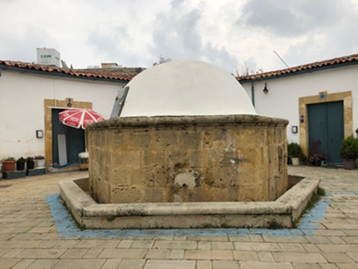
Figure 3. Fountain in the center of Samanbahçe houses (Aygenç, 2019)
Figure 4 and Figure 5 show street views. The materials used in the construction of the houses were selected following the climatic conditions on the island.
The stone foundations, mudbrick walls, ceilings covered with reed mats, and covered with local tiles are made of natural Cyprus' Tenant Village marble floors and wooden doors.
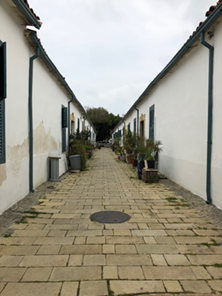
Figure 4. Street view (Aygenç, 2019)
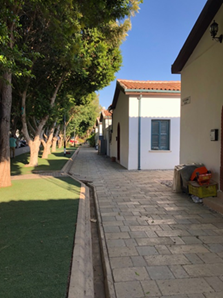
Figure 5. Fevzi Çakmak Street (Aygenç, 2019)
The traditional green color of the Ottoman was used in the doors and windows. On the keystones on the top of the yellow stoned jambs framing the doors, the number of each residence is written in Ottoman (Figure 6). Figure 7 shows an example of a shutter window.

Figure 6. Door (Aygenç, 2019)
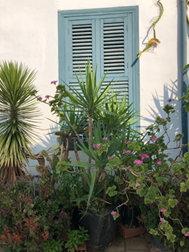
Figure 7.Window (Aygenç, 2019)
Samanbahçe Houses, which are the first examples of the "social housing" concept in Cyprus in a contemporary sense, were designed and restored by the EVKAF Foundation from September 2003 to 2004, as they inevitably deformed over time. UNOPS (United Nations Office for Project Services) provided financial support for the project. As part of the restoration, the facades and roofs of the houses and street floors were renewed. Houses and their immediate surroundings continue to be used in this state today.
Architectural and spatial features of Samanbahçe Houses
As for every space, user needs and preferences form the 'residence' design. On the other hand, meeting the needs and expectations affects user satisfaction. In this regard, it is seen that the architectural and environmental design of the Samanbahçe Houses project was solved correctly, considering the possible user characteristics.
The realization of such a solution for humans, place, and environment at the beginning of the 20th century; the continuity of the validity of this solution can be considered a remarkable situation. Samanbahçe Houses have an order lined up in an adjacent order with a uniform plan. On the streets that are closed to traffic, the houses are both opposite and side by side. The detachment of the houses' connection with the car park, which is open to public use, affects the privacy of the users through afforestation. Because "privacy" is the marking of one's areas and boundaries against other individuals or groups, thereby strengthening their belonging to the environment they live in.
Deformations were eliminated by improving the surfaces during restoration. These renewals enabled the users to adopt and use their dwellings more efficiently and affect their sense of belonging. In Figures 8, 9, 10, and 11, the facades' views before and after restoration can be seen.

Figure 8. Street facade of Fevzi Çakmak Street before restoration (EVKAF, 2004)

Figure 9. Fevzi Çakmak Street facade after restoration (EVKAF, 2004)

Figure 10. Şaban Paşa Street facade before restoration (EVKAF, 2004)

Figure 11. Şaban Paşa Street facade after restoration (EVKAF, 2004)
When it comes to the houses' interior features, each residence is usually 85 square meters in size. The residences consist of entrance, two rooms, kitchen, bathroom, toilet, and inner courtyard. As can be seen in the housing plans in Figure 12, there may be differences in the plans according to the location of the house, and their size can be variable. For example, house plans on corners (Figure 13) are different in shape and volume than others.
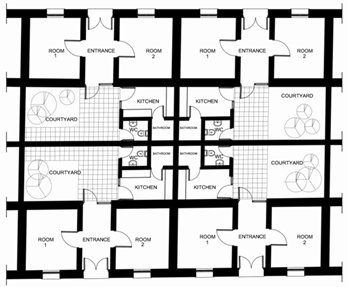
Figure 12. Typical house plans (Yıldız et al., 2009)

Figure 13. Plan of the house on corner (EVKAF, 2004)
Apart from the differences mentioned above, residential users also made interior renovations in line with their needs. EVKAF permits modifications in scope and content that will not damage the general identity of the building. The kitchen and bathroom areas in the typical house plan caused the most renovations to be carried out here; these two areas are detached from each other. With this change preferred by the majority of users, the kitchen area is separated. The bathroom area, where privacy is essential for every individual, is isolated from other spaces along with the toilet. The bathroom and toilet area detached from the kitchen is usually located next to the kitchen by covering some of the inner courtyard (Figure 14).

Figure 14. Bathroom and toilet area detached from the kitchen in typical residential plan (EVKAF, 2004)
While some continue to use the typical house plan without making the mentioned renovation, some use the bathroom and toilet area by separating it from the kitchen by a wall (Figure 15 ).

Figure 15. Room and toilet area detached from the kitchen in a different house plan (EVKAF, 2004)
With the restoration works (the renovation of the exterior facades, doors, windows, and roofs) and pedestrianizing and closing the streets to vehicular traffic, the life in the vicinity of the residences has improved. The communication and relations between the residents have been strengthened (Figure 16).

Figure 16. Images of Samanbahçe Houses after restoration ; 1: Street wiev; 2: A door after restoration; 3: Street wiev; 4: A door after restoration ; 5: Water tank; 6: The carpark next to the area; 7: Street wiev; 8: Street wiev; 9: Street wiev (Aygenç, 2019)
Depending on the weather conditions, users could meet on the street, and their social sharing and solidarity increased. All of these have provided the use of the residential neighborhood and the residential area, which has allowed the development of place attachment and a sense of belonging.
Samanbahçe Houses and Human-space-environment relationship
First and most effectively noticed in Samanbahçe Houses is the existence of an extroverted life that resists the negativities brought about by modern life. The most significant factor in this is the architectural design created horizontally instead of vertical architecture. So, people living in this place can communicate easily. Because the door of each residence opens towards the street and the neighbouring house. This structure reveals situations where people can see each other whenever they want to communicate with each other and strengthen their social relationships. As such, communication brings high levels of empathy, understanding, and solidarity. It causes individuals to increase their sense of satisfaction and belonging. As a whole, it is seen that the incompatibility of humans and buildings is not in question in Samanbahçe Houses. There is a design integrated with the user, structured with materials and planning suitable for the Cyprus climate. With the streets closed to traffic after the restoration, it is easier to spend time outside and use it as a part of daily life. People need to shape the place they live according to their tastes and expectations. Those residing in Samanbahçe also developed and personalized their streets, according to their preferences and tastes.
For example, they planted flowers and other greenery on the front of their doors (Figures 17, 18). They put a small table and chair to create a continuous communication medium and interaction with their neighbors. Such minor interventions can be considered as an indication that users personalize the area they live in.
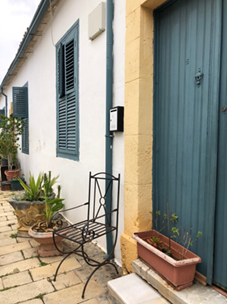
Figure 17. Personalized áreas (Aygenç, 2019)
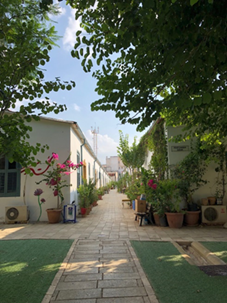
Figure 18. Fevzi Çakmak Street (Aygenç, 2019)
When viewed from today's modern perception of life, a satisfaction situation is generally observed on the contrary in Samanbahçe Houses, which can be considered small or inadequate. The users made renovations on condition that they did not spoil the design to adapt the space to their needs. It is not possible to say that the renovations are sufficient. Yıldız et al. (2009) also draw attention to this issue and point out that it would be beneficial to make necessary interventions in the interior, such as rearranging wet areas. Considering the current living conditions, Samanbahçe Houses continue to be valid with the arrangements, although it has been a long time since its construction. However, a better sustainability level can be achieved by eliminating physical disruptions and lack of space, as stated in Vehbi and Hoşkara (2010).
Methodology
Compared to today's social housing projects, where people's communication and interaction decreased, Samanbahçe houses give the impression of a livable and friendly environment. For this reason, Samanbahçe Houses are determined as a study area where architectural and spatial properties, human-space-environment relations, satisfaction, belonging, privacy concepts, and their effects on human relations can be observed. Based on the fact that the study consists of observations and the need to contact people living there, a survey was conducted with the users of Samanbahçe Houses. As a result of the survey study applied to 30 users, numerical data about the concepts of satisfaction, belonging, and place attachment of residential users were determined. SPSS software was used for the processing and analyzing of survey data. In the first part of the questionnaire, there are questions about the demographic information of the participants. In the second part, there are questions about the spatial characteristics and the questions about determining satisfaction based on these features. In the last section, the questions about the relationship between humans and the environment, place attachment and belonging.
Results
Many different expressions have been made for the concept of belonging that emerge with satisfaction; they are all related to the emotional bond between the person and place. The strength of this bond determines the rate of belonging. The reason for the sense of belonging that can vary according to different cultures is the characteristics and forms of space use. As revealed in the study, each user's degree of belonging in the chosen place differs because the meanings they attribute to the space are not the same. As another point that affects the degree of belonging, it is necessary to mention the time spent in the space; the experiences and the memories accumulated there. Although there are similarities in the time spent in the area for the users of Samanbahçe Houses where the study was conducted, it is the memory factor next to the time that triggers belonging.
For this reason, although the results of the questions used to measure belonging, the users belonging to their places, the way each user reaches this result may differ. The common point of users’ belonging is that they have created spaces to personalize and express their sovereignty. With these interventions in the spaces, users can better meet their needs, increase their satisfaction, and feel belonging. Based on all these, according to the meanings attributed to the space, it can be said that individuals' belonging can differ. Although there are factors that affect belonging, such as cultural and personal characteristics, basically, "the feeling of belonging to a place" has always existed for people. Keeping these in mind, the numerical data obtained during the Samanbahçe Houses research will be presented and interpreted.
According to the results obtained, 80 percent of the respondents are female, and 20 percent are male. The majority of the participants are between the ages of 55-64. The results also showed that participants between 45-54 and 65 are equal in proportion to 26.66 percent. The vast majority of respondents were born in Cyprus, and there was a small percentage of people born in Turkey. The majority of users were primary school graduates (56.66%), while the remaining were secondary school high school and university graduates with small percentages. As shown in Table 1, the majority of residents (66.68%) have been living in their dwellings for more than twenty years. The number of people living in the dwelling found that the number of people living with one person and two people is equal to 30 percent (Table 2).
Table 1.
Frequency distribution and percentage analysis of residents' living time in houses.

Table 2.
Frequency distribution and percentage analysis of people living in the house.

According to the data in Table 3, it can be said that the users are satisfied with the house where they live with a high rate of 83.33 percent.
Table 3.
Frequency distribution and percentage analysis of users' residential satisfaction.

When the data in Table 4 are analyzed, it is seen that the houses with a large percentage, 83.33 percent, have been renovated by their users.
Table 4.
Frequency distribution and percentage analysis of the renovations in houses.

Considering the interior spaces to meet user needs, users reported that they found the areas sufficient to meet their needs, with 66.67 percent (Table 5).
Table 5.
Frequency distribution and percentage analysis of meeting the user needs.

According to the data in Table 6, the users have a high level of belonging to their houses and their immediate environment.
Table 6.
Frequency distribution and percentage analysis of users belonging to their residences and their neighborhood.

Table 7.
Frequency distribution and percentage analysis of users feeling safe in their dwellings and neighborhood

Evaluation and Discussion of Survey Results
In the survey area consisting of 72 houses, some houses were vacant, that these houses belong to people who passed away. It was determined that no one occupied one house in Güneysu Street, two houses in Aksu Street, and one house in Çelebi Street. One of the houses was used as the office by the Business Women's Association in the central area. As a result, a total of five houses were not suitable for conducting the survey. The questions were organized as a total of 29 in three groups related to personal, spatial, and belonging.
Evaluation of personal questions:
- Despite the presence of individuals of all ages, the population of 45 years and older is more concentrated.
- Users have to be citizens to be able to live in these residences. Birthplaces differ.
- The majority of users are primary school graduates.
- Among the female users interviewed, there are 50% of housewives, as well as users with different professions such as tailors, teachers, and archaeologists.
- The research showed that 45 and older people have been living in their dwelling for more than 21 years, which affects their belonging and satisfaction rates.
- The proportion of people who live in one or two people in the house is high, which is reasonable considering the dwelling size and conditions. However, there are also residences where individuals of five and above live.
- Satisfaction rate is high in terms of general residential use. Included in this majority are the houses with five and more than five people.
- The kitchens are where the most time at home is spent. Additionally, people spend time in front of their houses where neighborly relations develop.
Evaluation of spatial questions:
- Those who say that the residential areas do not meet their needs, mentioned the insufficiency of the kitchen, toilet and bathroom areas.
- The ratio of fixed elements such as cabinets in residential areas to meet user needs and not being able to meet the requirements was close to each other. The users state that even if the interior renovations are made, and these elements are renewed, the fixed items, especially in the kitchen areas, are insufficient.
- The proportion of those who renovated their house is higher than those who do not. Usually, the changes are as follows:
- To close part of the courtyard,
- To move the toilet and bathroom to a partially closed courtyard and thereby enlarge the kitchen area,
- Renovating kitchen cabinets,
- Restoring the roof and floor.
- The vast majority said that they are satisfied with the relationship between the spaces in their houses.
- Depending on the location of the houses, benefiting from natural daylight and natural ventilation may vary. While the vast majority say that they get enough natural daylight and are satisfied with natural ventilation, other users stated that the windows are insufficient.
- The majority of the users said that their houses could quickly get warm in the winter season. Air conditioners and electric heaters were generally preferred for heating.
- The rate of those who say that they can quickly cool houses in summer is much more than those who express otherwise. Air conditioners and fans are used for cooling.
Evaluation of questions about belonging:
- The rate of enjoying spending time in the house is quite high. Every individual who lives with pleasure in his home also feels satisfaction and belonging at a similar rate. Thus, the rate of sense of belonging and the enjoyment of spending time in the residence is equal for the majority of the users.
- The rate of feeling safe in the dwelling is quite high. In this rate, some users think they are safe even though they do not feel belonging to their home.
- Depending on the neighborhood relationships and the safety of the region, it is seen that sense of belonging, sense of community, and place attachment rates are very high.
- It was observed that there is no social-cultural diversity in the area due to the obligation to be a citizen of Northern Cyprus to become a tenant in Samanbahçe Houses. Persons who reported that they came from Turkey and other countries, who spent many years in Cyprus, stated that they feel belong here.
- The most important phenomenon observed during the research period and emphasized by the users was neighborhood relations. The number of people interacting and communicating with their neighbors is the majority. Their attitudes that help each other, support each other and enjoy spending time together can be easily perceived. The vast majority uses residences' immediate surroundings as the closest and ideal place to spend time with neighbors. These places are mostly residential interiors, outside the house, around the fountain, and the green area.
- Due to the strong sense of belonging to the homes and their immediate surroundings, a large proportion of users stated that they miss their houses and neighborhoods when they stay away for a while.
- Even if the possibilities are different, the rate of those who want to live in Samanbahçe Houses is high. Among them were those who stated that they were happy to live with their neighbors and that they would want to live here even if they had the chance to build their houses from the beginning. On the other hand, some users say that they will not want to live here if the possibilities are different.
In the last question, the respondents were asked about the satisfaction or dissatisfaction they wish to add regarding their existing residences and or their immediate surroundings. It was seen that the majority of the users were satisfied with living here despite spatial deficiencies.
Conclusions
The main starting point of this study was to investigate the sense of belonging to space and place attachment, how it formed, and the psychological effects of the user's living environment. The answers to all these questions have been researched and analyzed in the example of Samanbahçe Social Houses, an outstanding historical example of the social housing. A social housing constructed under the conditions of the Ottoman Period, restored in 2003-2004 and surviving to the present day; how do these buildings continue to be used considering the elapsed time, developments, and changes? Or how much can the same residences and the environment respond to today's needs, and how satisfied can their users are?
Some of the answers to the questions were obtained in the theoretical research carried out; the other part was obtained in the conducted survey study and observations. The rate of “satisfaction” was quite high in the survey study. It was seen that the most critical factor in the high satisfaction rate was environmental characteristics and neighborhood relations; Most of the users underlined that they wanted to live in Samanbahçe Houses because of their neighborhood relations. It was determined that the arrangement of single-story houses horizontally was effective in the intense social relationships and interaction. The fact that the streets were cleared from traffic positively affected this effect.
Users prefer outside the front of the houses, streets, around the central fountain, and green areas to interact with their surroundings. Users who prefer to spend their time mainly in front of the houses and streets have personalized these areas using landscape elements and other street furniture.
The low rate of “dissatisfaction” shows that users can feel different emotions for the same place. Those who stated dissatisfaction stated that they would not prefer to live in social housing if their financial conditions were sufficient. The ratio that appeared in the responses related to 'satisfaction' is similar to the sense of belonging. Some users do not have a sense of belonging to the place and the environment, although in the minority. So, the concepts of satisfaction and a sense of belonging depending on it can vary for each individual and every place.
In the research and observations made within the scope of this study, which is valuable for contributing to future studies; Some spatial deficiencies and innovation needs have been identified in the houses built based on user needs and expectations of the time they were designed. The most obvious of these requirements that emerged over time, bathroom, and toilet areas are detached from the kitchen; indoor spaces are brought to more useful dimensions, renewal of fixed interior elements. The modifications made by the users with their possibilities to not to spoil the structure are not sufficient.
All this shows that designing a space and an environment cannot be realized by ignoring people. The strong relationship between humans and space with each other is a guide in the design process. Designs that already exist but cannot meet the needs of people who live in have to change. This situation does not always indicate that the design is wrong or inadequate. It can also create new living space needs by changing people's personal and cultural characteristics and expectations over time. Regardless of the reason, the spatial solutions that will allow its user to live in harmony for a long time with its structure that provides renewal by preserving its main lines will continue. As it contains these features, Samanbahçe Houses continue to live as a sustainable example of social, cultural, environmental, and indoor properties.

